PriestmanGoode’s Pure Skies concept is disrupting industry norms with its overhaul of business and economy cabins for post-pandemic travel. Olivia Palamountain reports
Could new and improved air travel be the silver lining of the Covid-19 pandemic? If these futuristic cabins by PriestmanGoode are put into production then just maybe.
Pure Skies offers “an answer to pressing consumer, business and environmental concerns” in a post Covid-19 world, with the London-based design studio drawing on everything from colour psychology to antimicrobial finishes to create its vision.
Perhaps the most dramatic change imagined is the move away from the notion of “class”. Instead, Pure Skies re-imagines business and economy class cabins with Rooms and Zones, engineered around three main factors:
- Personal space
- Hygiene
- Touch-free journey
Nigel Goode, co-founding director at PriestmanGoode, says: “This latest work from the studio represents pragmatic innovation. With the benefit of over 30 years’ experience, we know how to harness design to achieve long-term positive change.
“We’ve looked ahead to imagine future scenarios and taken into account new passenger behaviours driven by the global pandemic to ensure our designs can be implemented within a few years and will meet user and airline requirements for many years ahead.”
The equation between space and profitability has been a long-standing balancing act for the airline industry, an issue further complicated in a post-Covid-19 world. The team focused on how space in economy cabins had become too compromised and explored how a total re-think of seat features and cabin layout might lead to an improved passenger experience.

Key features of Pure Skies include…
Pure Skies Rooms (previously business class)
Each seat sits within a fully enclosed personal space, partitioned by full-height curtains.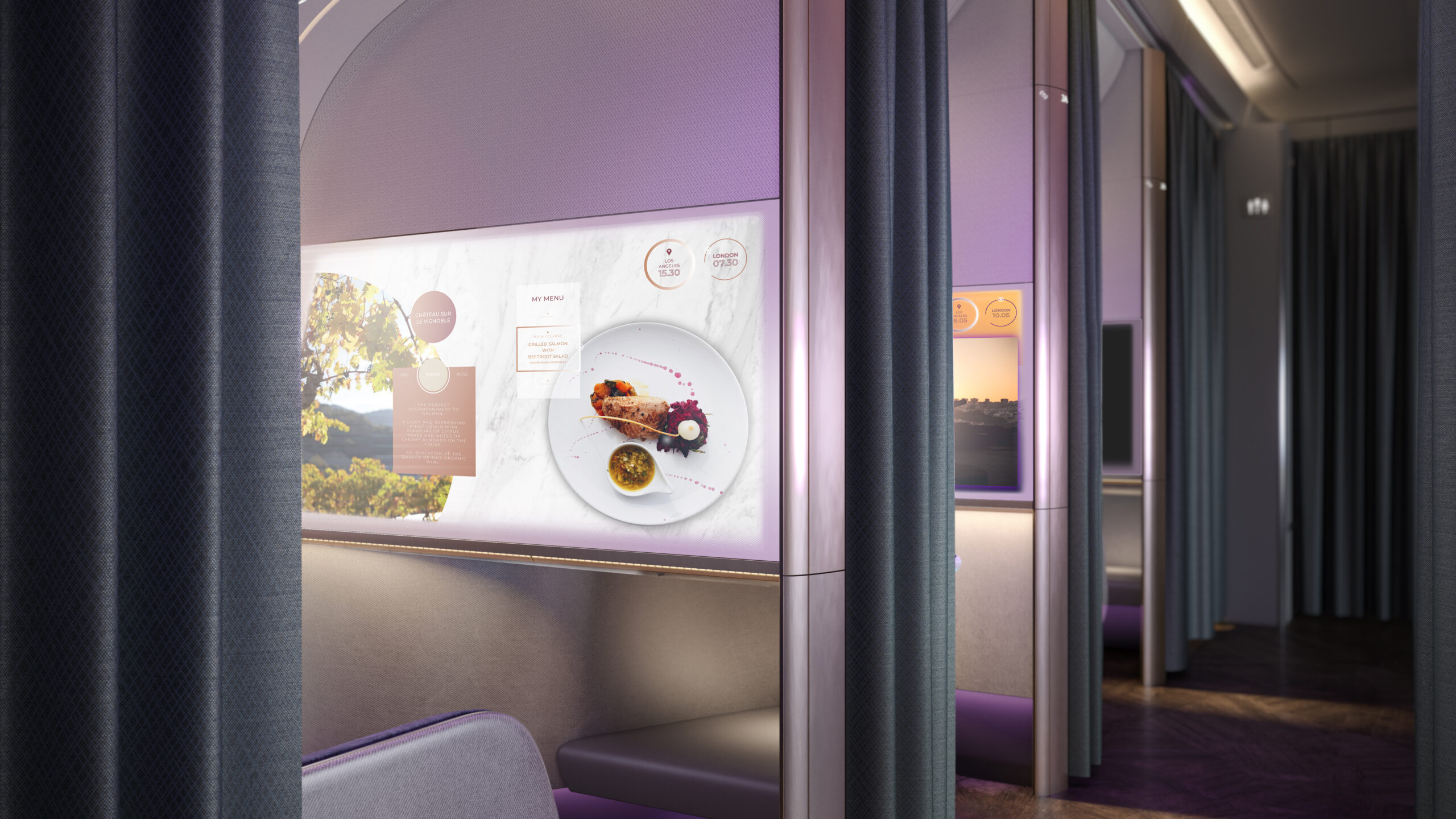 There’s a brand-new seat design with minimal “split lines” and seam-welded fabrics. There will also be antimicrobial materials and finishes to limit the spreads of germs and viruses.
There’s a brand-new seat design with minimal “split lines” and seam-welded fabrics. There will also be antimicrobial materials and finishes to limit the spreads of germs and viruses.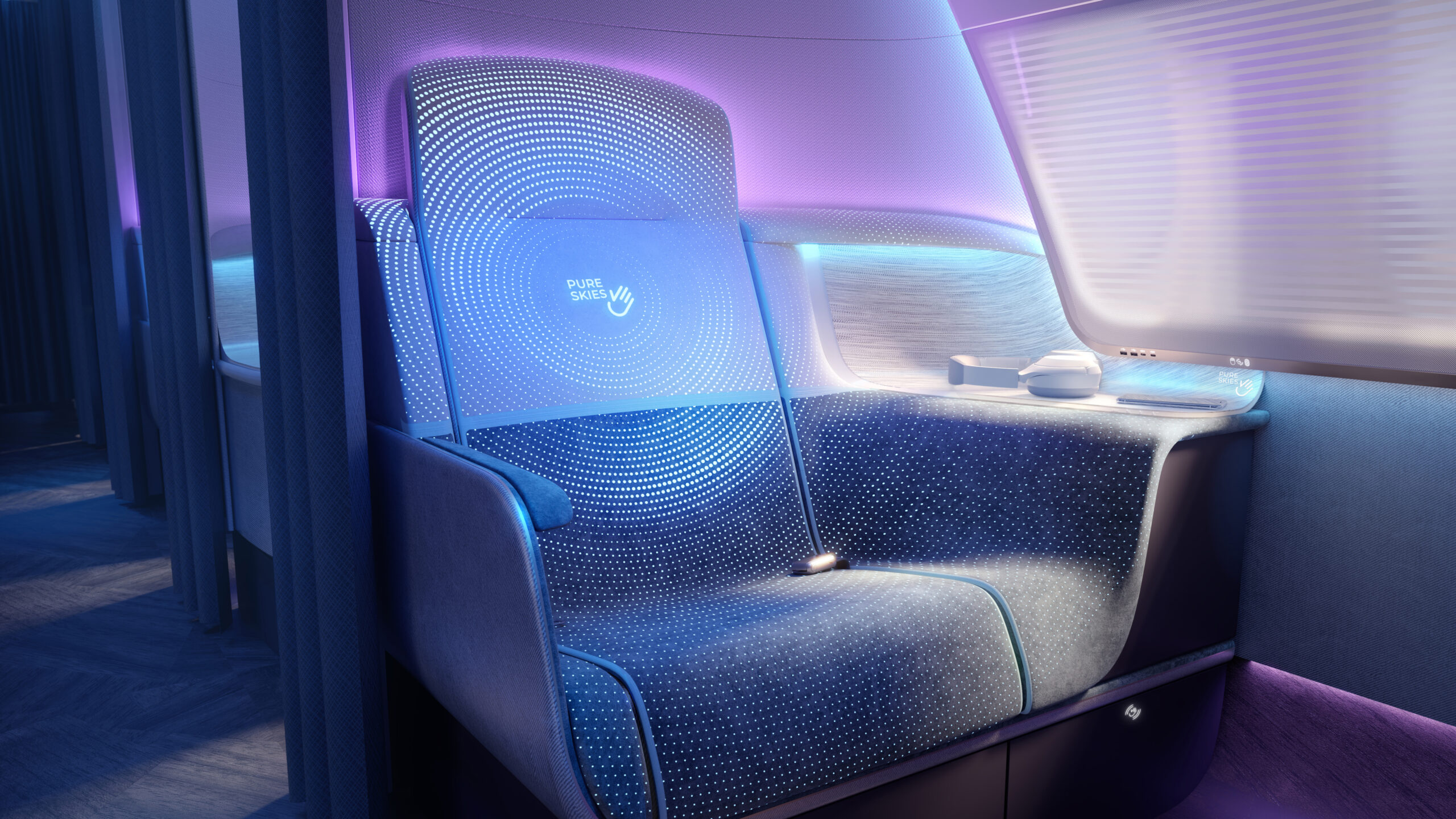 Each seat will have individual lighting and temperature control. At the same time, in-flight entertainment (IFE) systems will be fully synchronised with passengers’ own devices.
Each seat will have individual lighting and temperature control. At the same time, in-flight entertainment (IFE) systems will be fully synchronised with passengers’ own devices. 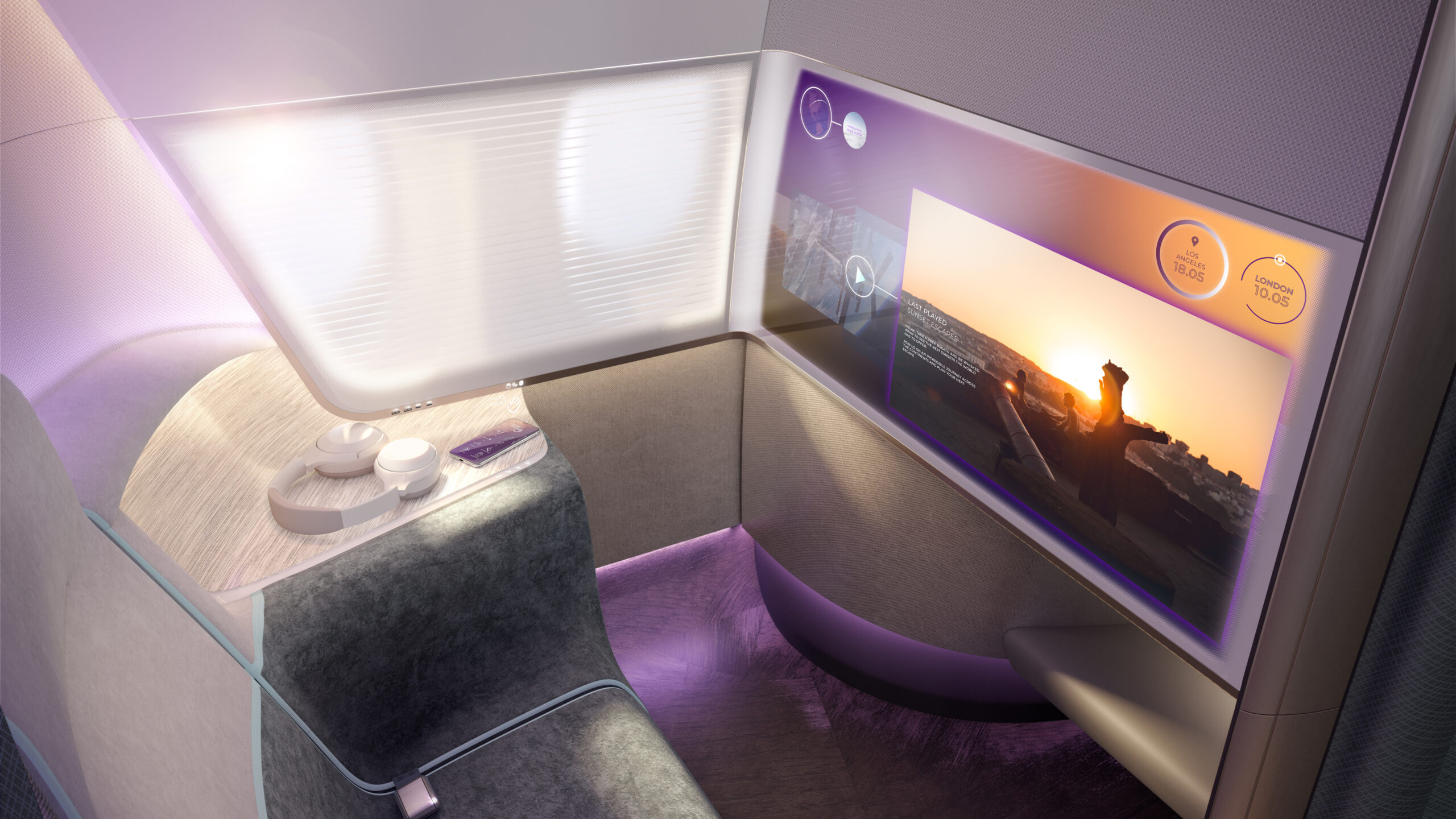 There will be personal overhead stowage and wardrobes.
There will be personal overhead stowage and wardrobes. 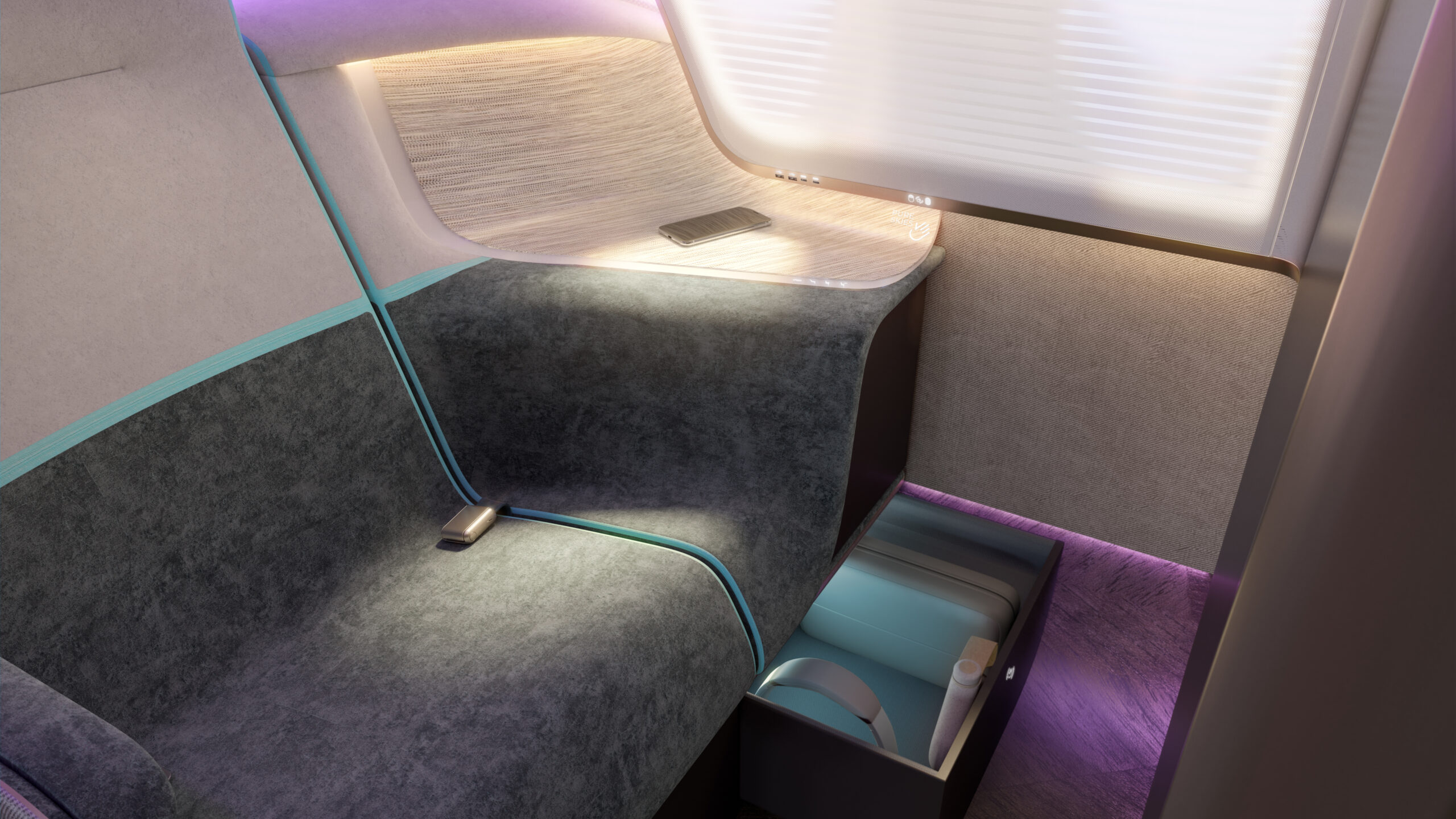 Pure Skies Zones (previously economy class)
Pure Skies Zones (previously economy class)
This section of the plane will feature dividing screens between every other row for greater separation between passengers.
There will be a staggered seat configuration to maximise the feeling of personal space and allow people to sit in the groups they are travelling in.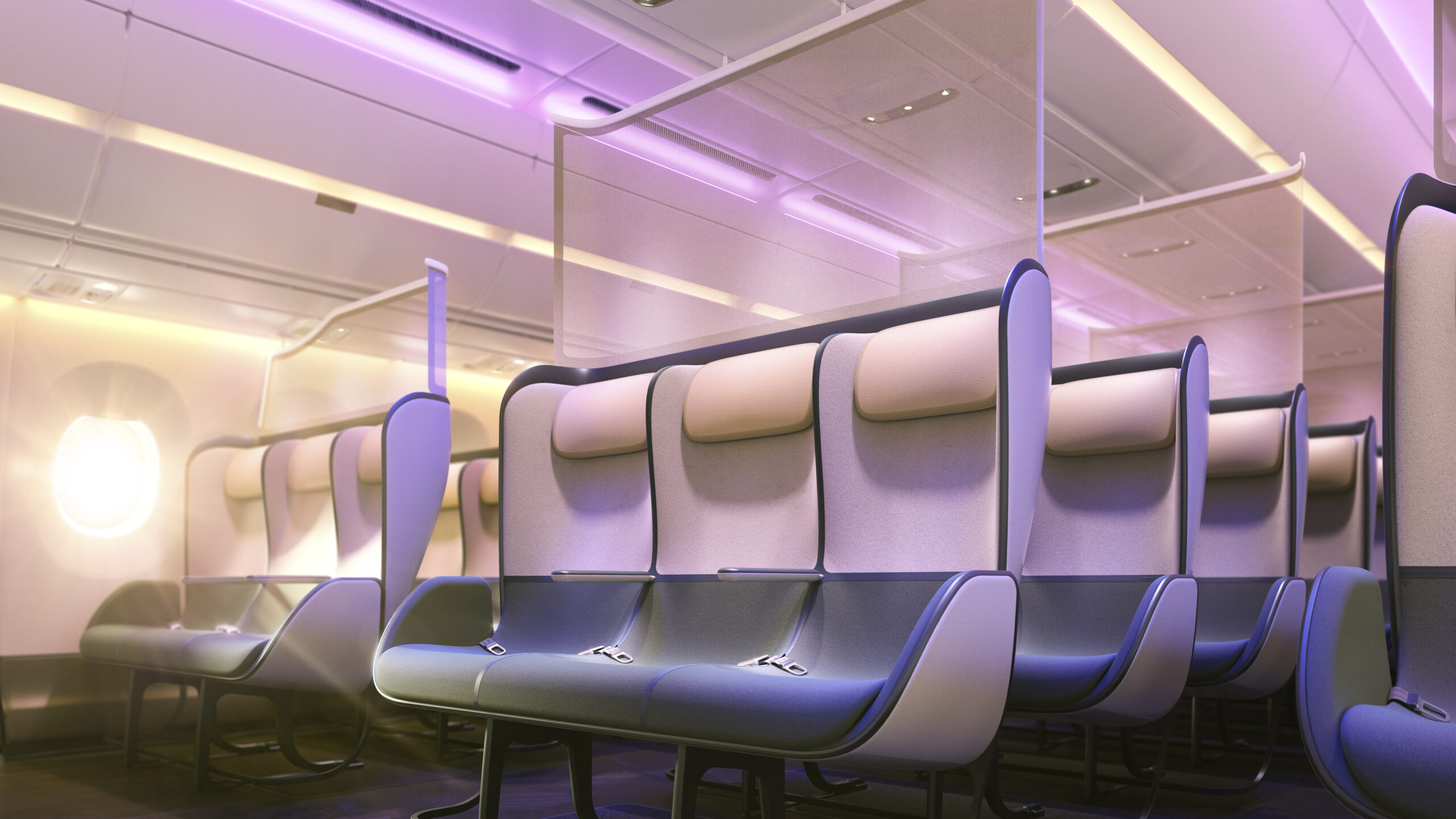 The backs of seat shells will have no gaps to eliminate dirt traps.
The backs of seat shells will have no gaps to eliminate dirt traps.
The recline mechanism will be entirely contained within the fabric skin of the seat to avoid split lines and hard-to-clean gaps.  The removal of IFE screens in favour of passenger-owned devices will reduce of the weight of the aircraft, as well as costly technology.
The removal of IFE screens in favour of passenger-owned devices will reduce of the weight of the aircraft, as well as costly technology.
This concept also presents additional commercial opportunities: straight seats without IFE screens with the option to hire a device; or staggered rows to give more legroom and with screens included – better but also more expensive for travellers.
Seat-back trays will be removed, replaced with a clip-on meal trays direct from the trolley. 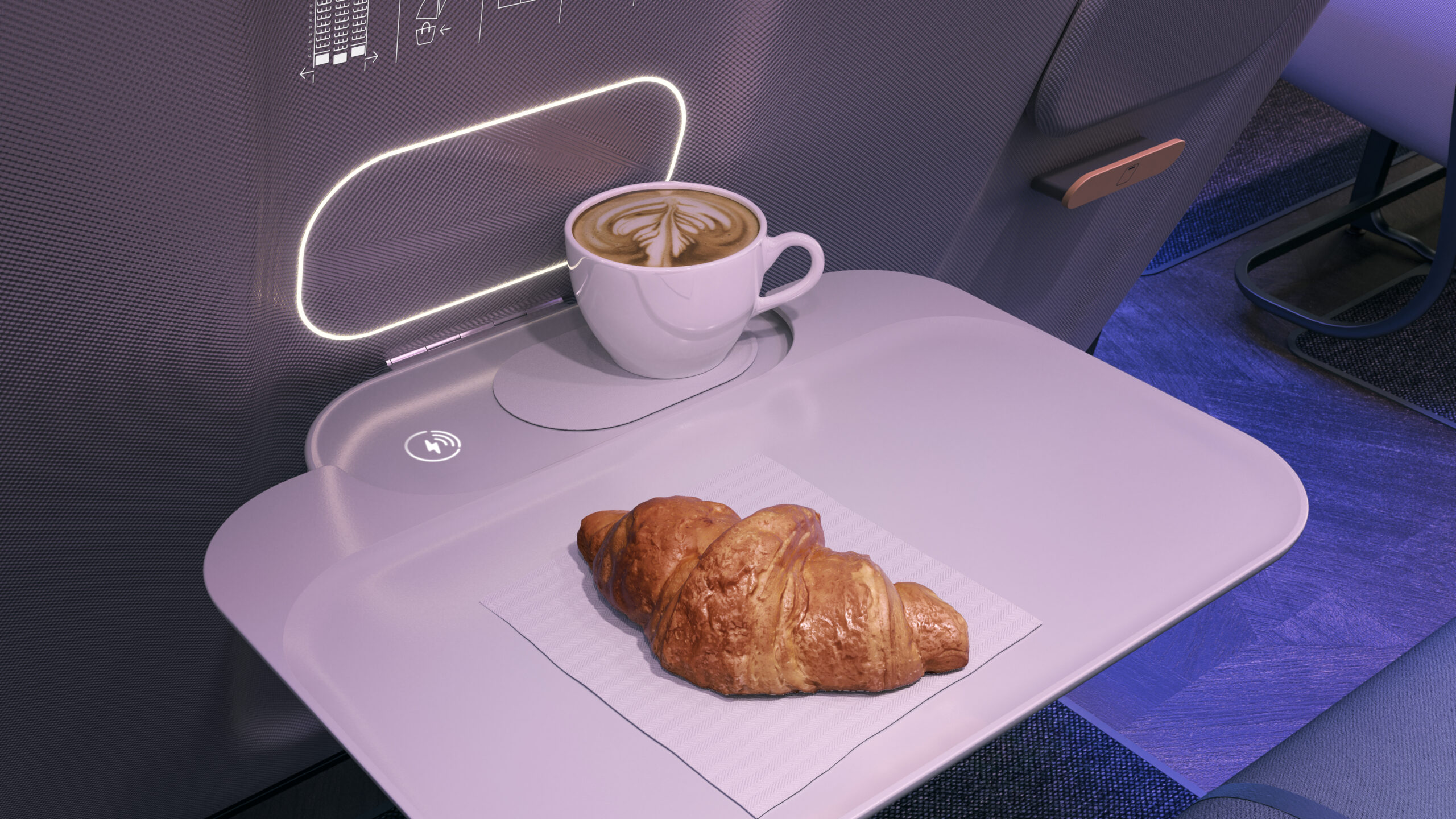 With in-flight magazines gone, seat-back literature pockets will instead have a removable bag for each passenger or the option to clip on their own.
With in-flight magazines gone, seat-back literature pockets will instead have a removable bag for each passenger or the option to clip on their own.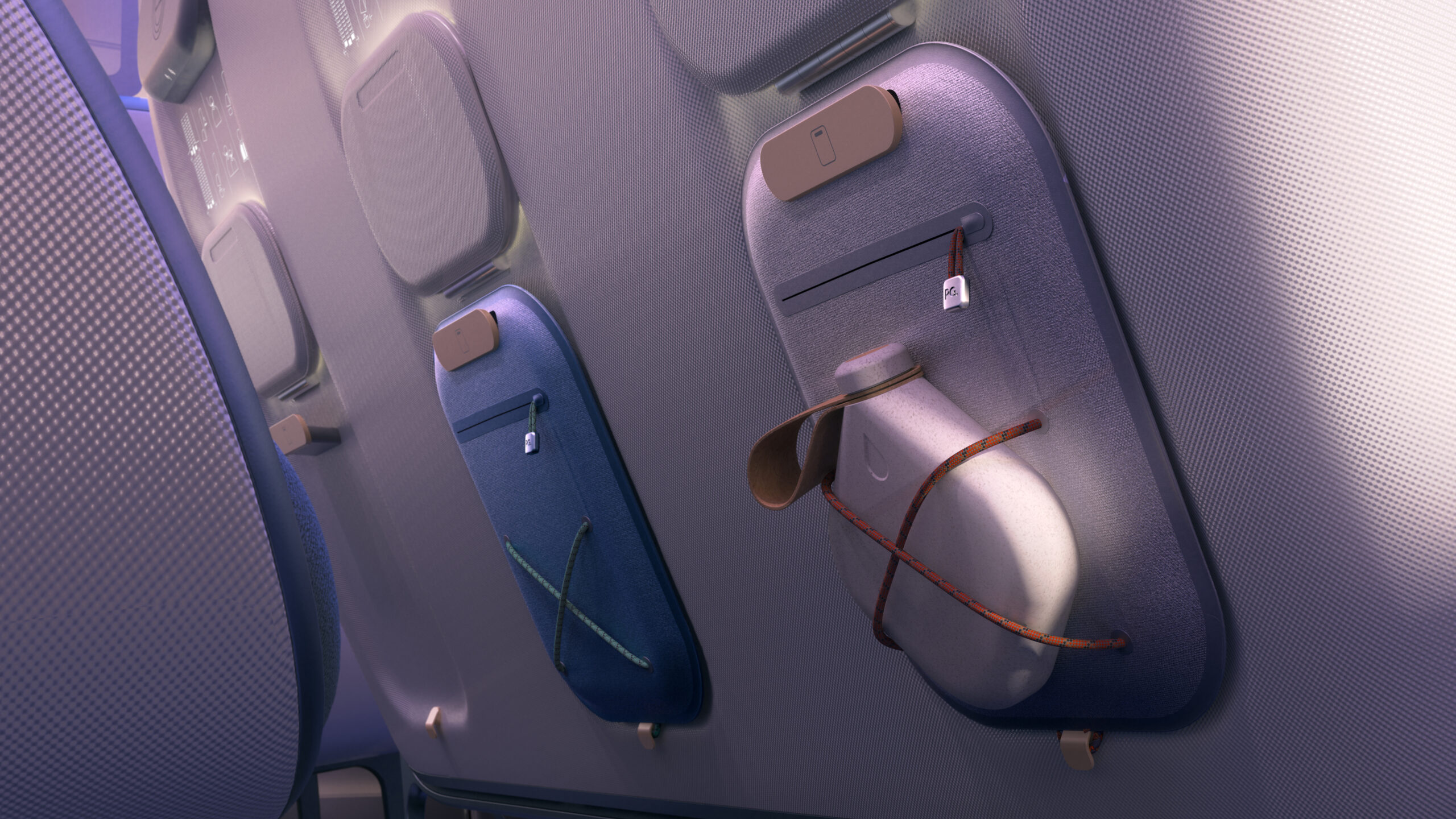 The very latest developments in materials and antimicrobial finishes will be used to meet higher future standards in sanitation, complemented by shades determined using colour psychology.
The very latest developments in materials and antimicrobial finishes will be used to meet higher future standards in sanitation, complemented by shades determined using colour psychology.
And while Pure Skies has made passenger safety, calmness and security a priority, it also takes a planet-centric approach by marrying these concerns with sustainable solutions for aviation.
What’s coming next? Trend reports available to download HERE



